Notes and rests in music create melodies, harmonies, and rhythms essential to any composition. Understanding them allows you to enjoy the music you listen to and even create your own. Read on to find out more.
What Are Notes in Music?
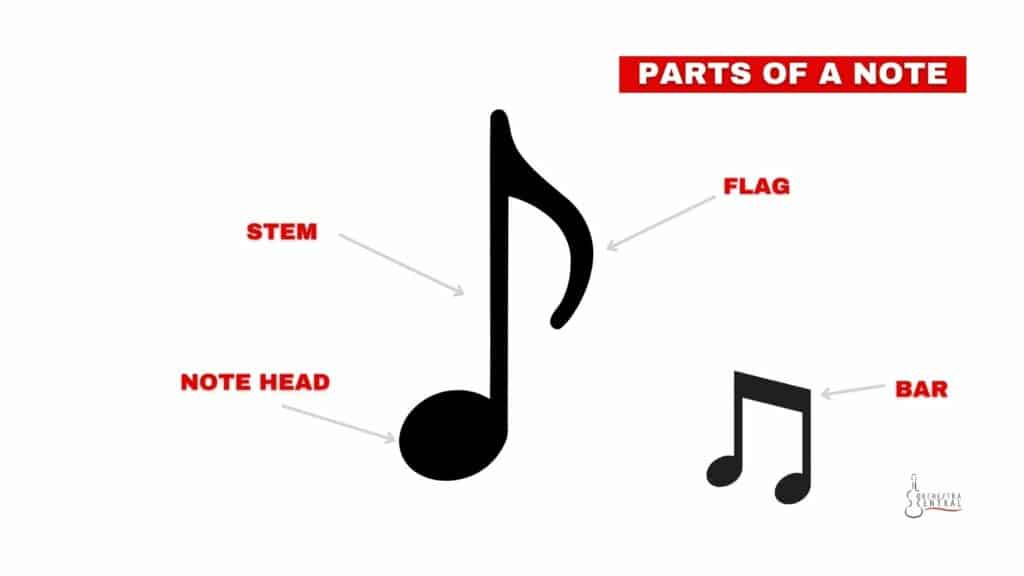
Notes represent the pitch (how high or low) and duration (how long or short) of a sound. Each note has four parts: the note head, flags, stem, and bars.
- Note head: A note head is a round or oval-shaped part showing the pitch of the note you should play or sing. It can be filled in (black) or left open (white) and appear on a line or in a space on the musical stave.
- Stem: The stem is the vertical line that extends from the note head to show you the note’s duration. You can often see it pointing up or down, depending on the position of the note on the stave.
- Flags: Flags are small, diagonal lines attached to the stem of a note. They tell you that the note is shorter—the more flags attached to a stem, the shorter the note duration.
- Bar: The bar or beam is a horizontal line connecting many notes of the same pitch, showing that you should play or sing.
Expert Tip: Stems and beams help you organize and simplify the notation of your music, making it easier to read and play.
What Are the Different Types of Notes?
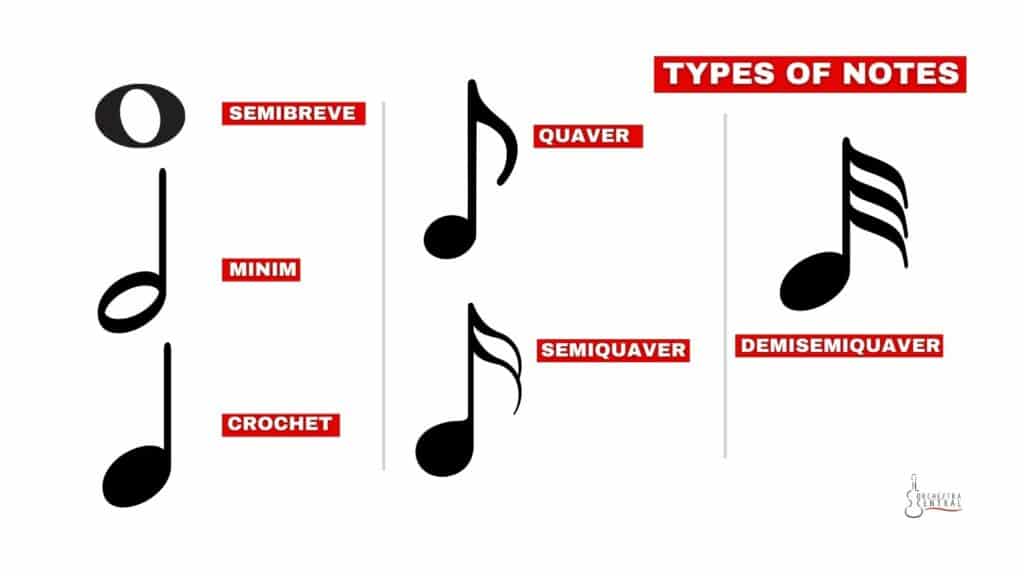
There are many types of notes. Each has a unique note duration, appearance, value, and beat length. Some of the most common include:
Semibreve
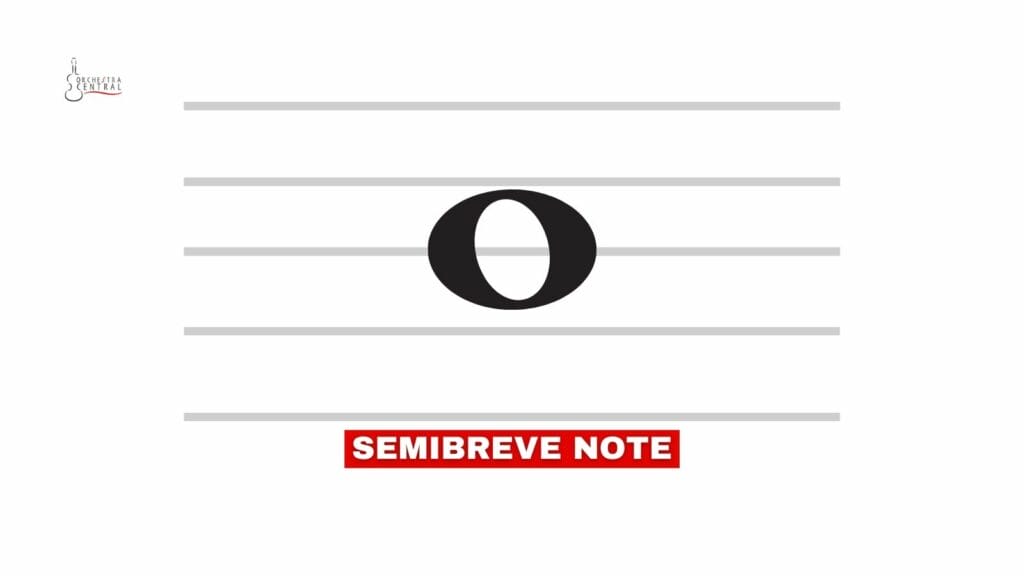
A semibreve or a whole note has the longest duration, making it common in slow, melodic passages. It appears as an open circle and lasts for four beats in a 4/4-time signature. It has a note value of 4.
Minim
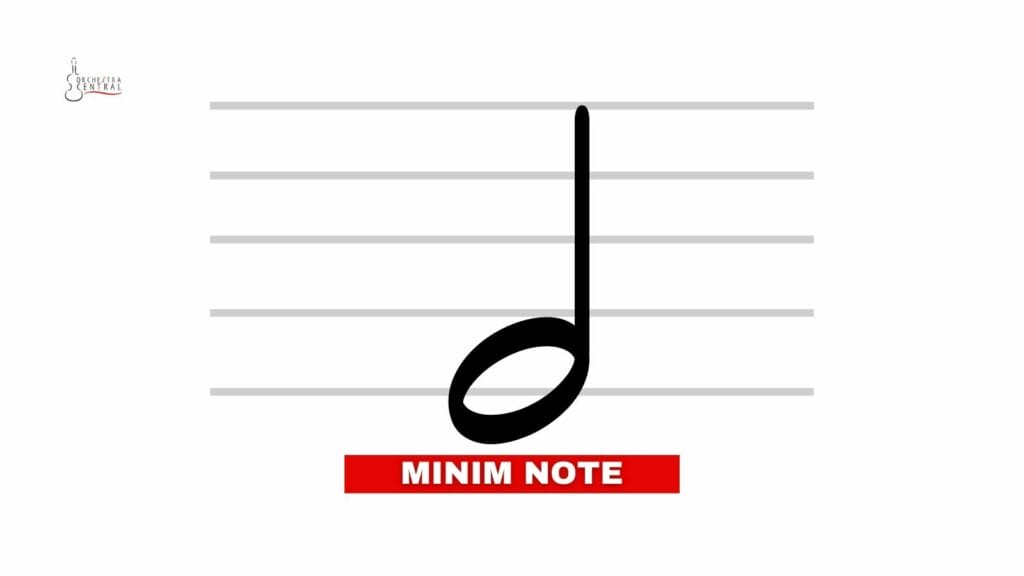
They are also known as half notes. It is half the duration of whole notes and is common in moderate-tempo passages. This note appears as an open circle with a stem and lasts for two beats in a 4/4-time signature. It has a note value of 2.
Crotchet
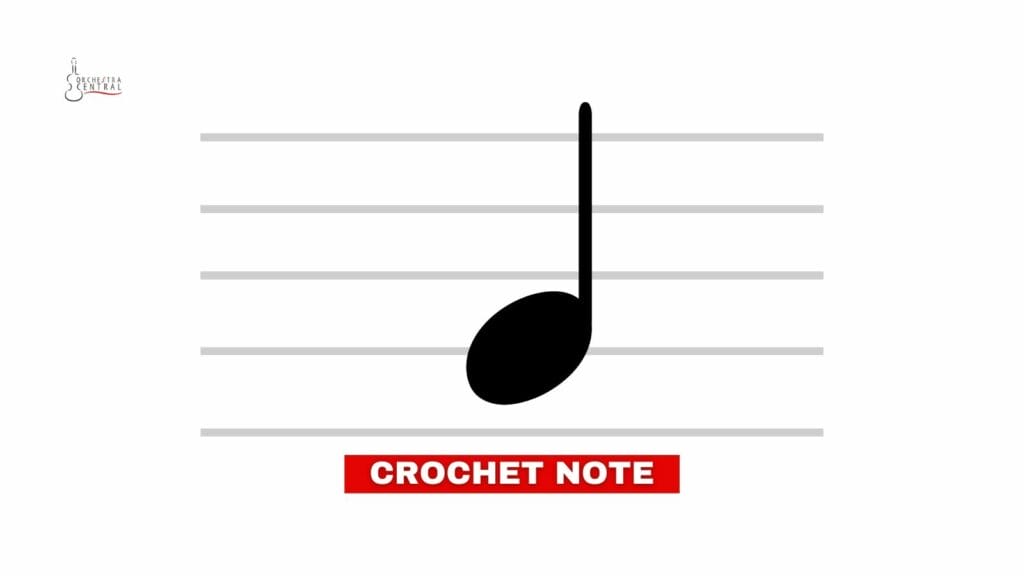
They are also referred to as quarter notes and have a note value of 1. They last half as long as half notes. Many musicians or composers use it in fast-paced passages. Their illustration comprises a filled-in circle with a stem. We hold them for one beat in a 4/4-time signature.
Quaver
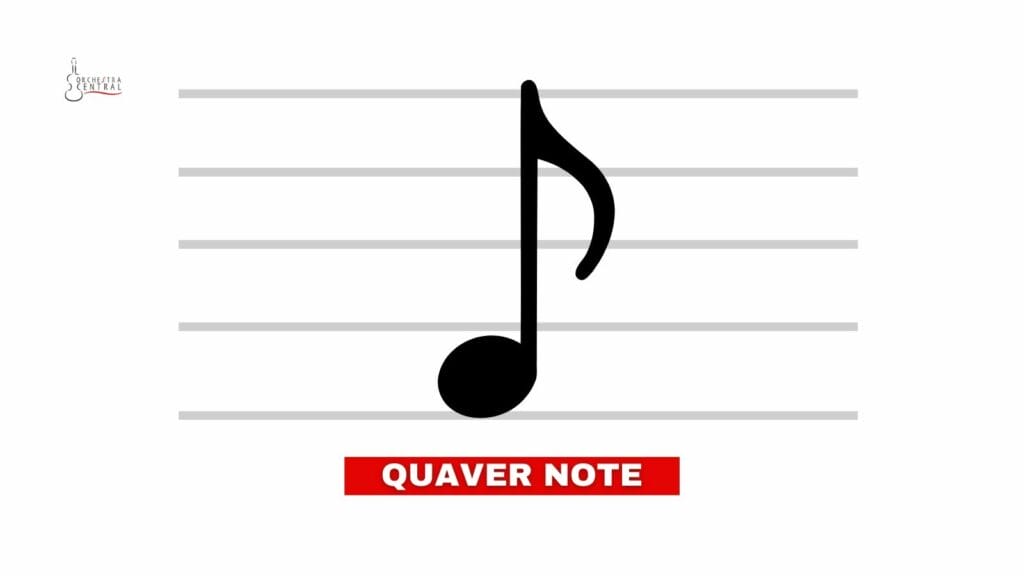
They are also known as eighth notes. It has a note value of 1/2 and lasts for half a beat in a 4/4-time signature. They are an eighth as long as whole notes. We often use them in quick-paced passages. Their representation is a filled-in circle with a flag and a stem.
Semiquaver
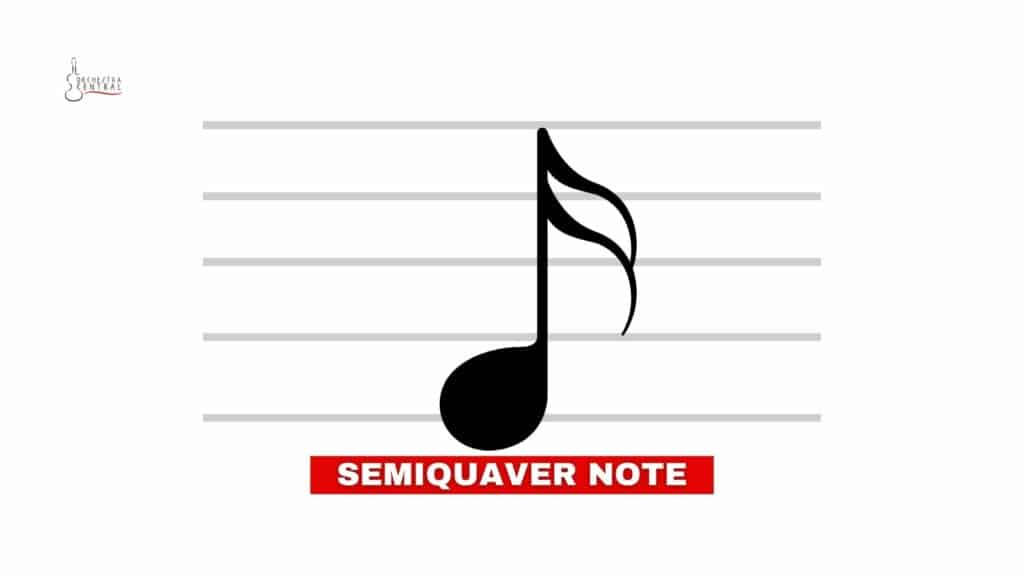
Semiquaver or sixteenth notes last a quarter of a beat in a 4/4-time signature and have a note value of 1/4. They are half as long as eighth notes, and we often use them in fast-paced passages. You’ll be able to identify a semiquaver note with its filled-in circle with two flags and a stem symbol.
Demisemiquaver (32nd Note)
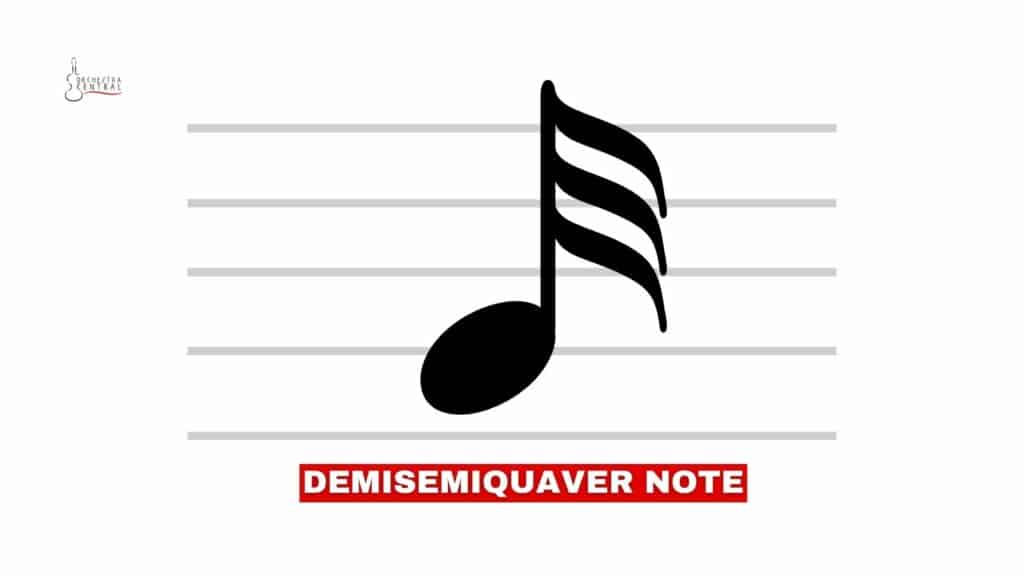
Demisemiquaver notes last half as long as sixteenth notes. They appear as a filled-in circle with three flags and a stem and are held for an eighth of a beat in a 4/4-time signature. It has a note value of 1/8.
What Are Rests in Music?
Rests are symbols in music that show you when you shouldn’t produce any sound. They also show the length of the pause before playing the next note or sequence. With notes and rests, you can create a sense of rhythm, structure, and timing in music.
What Are the Different Types of Rests in Music
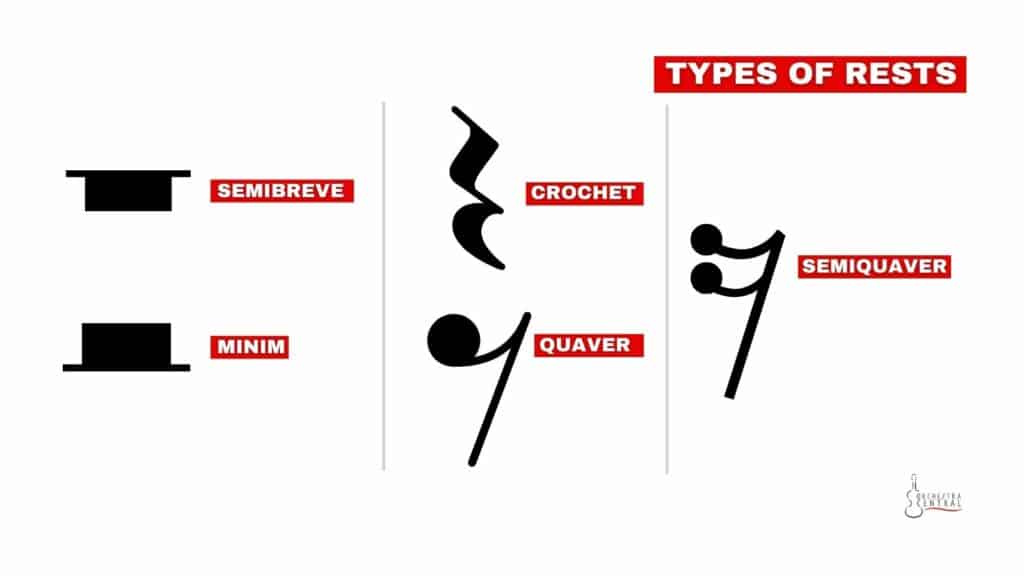
Like notes, there are different rests in music. Each has a unique appearance and length. Some of the most common include:
Semibreve Rest
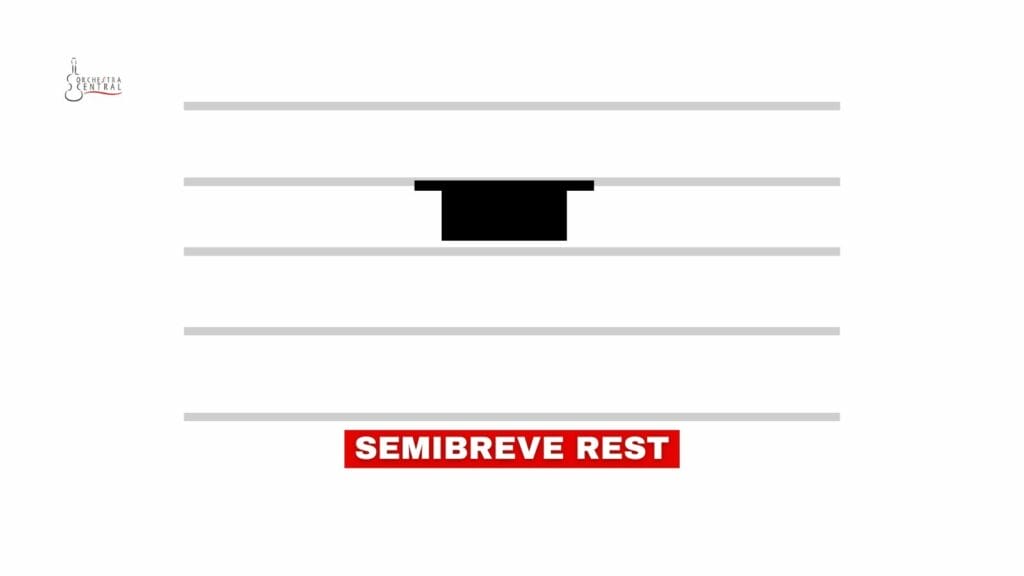
They are also known as whole rests. They are the longest and appear as a small filled-in rectangle on the bottom side of the second line of the staff. This rest lasts for four beats in a 4/4-time signature. They show a long silence in a slow-tempo passage.
Minim Rest (Half Note Rest)
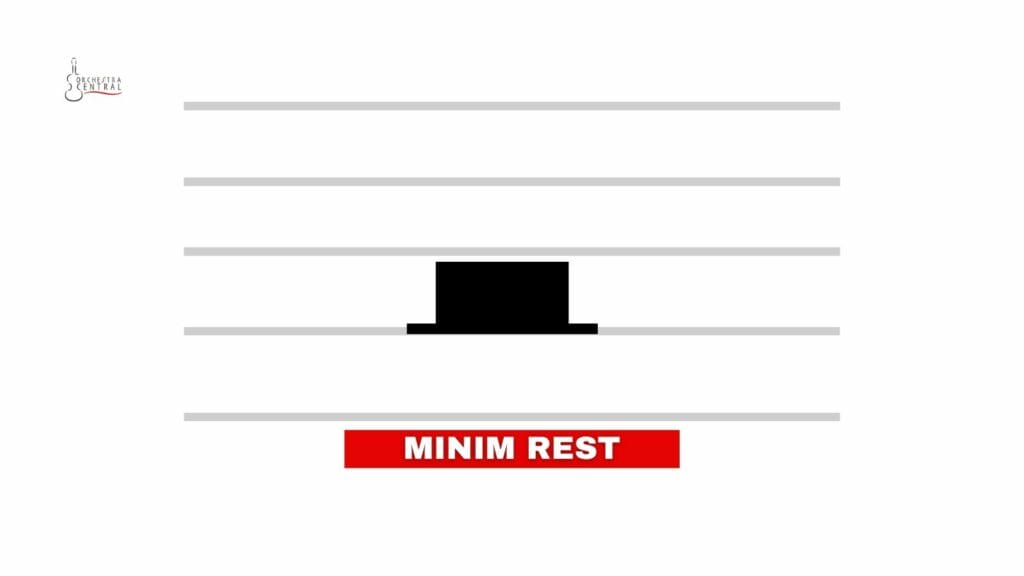
Half rests are half as long as whole rests. Their illustration is a small filled-in rectangle. They last for two beats in a 4/4-time signature to show a short silence in a moderate-tempo passage.
Crotchet Rest (Quarter Note Rest)
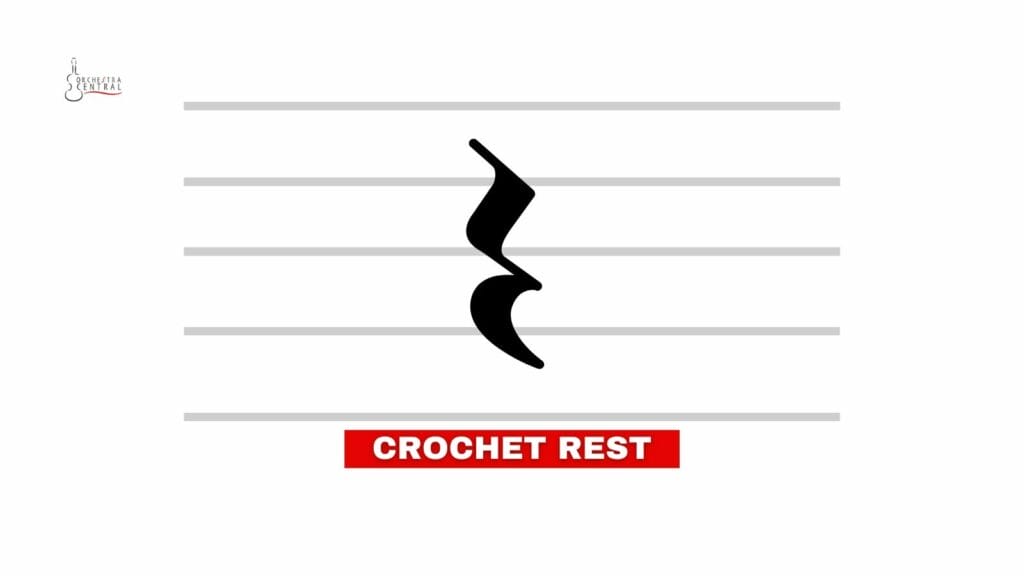
Quarter rests last a quarter of the duration of a semibreve and show a brief silence in a fast-paced passage. Unlike other rests, this type of rest has an odd symbol, which looks like a skewed letter Z.
Quaver Rest (Eighth Note Rest)
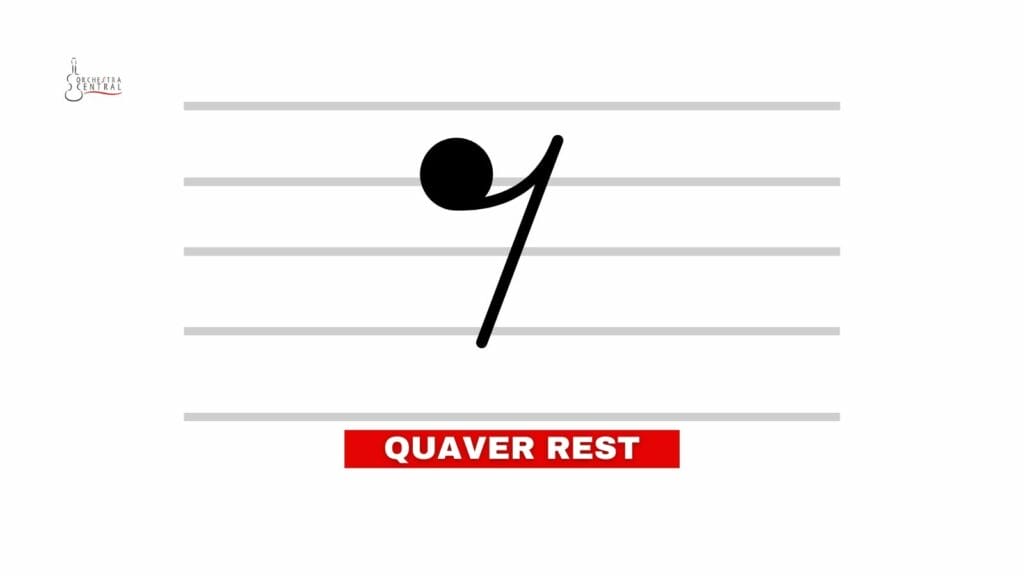
Eighth piano rests last an eighth of the duration of a whole rest. They appear as a stem and a flag with a dot on the upper left part. If you see a quaver rest, that means you should hold it for half a beat in a 4/4-time signature.
Semiquaver Rest (Sixteenth Note Rest)
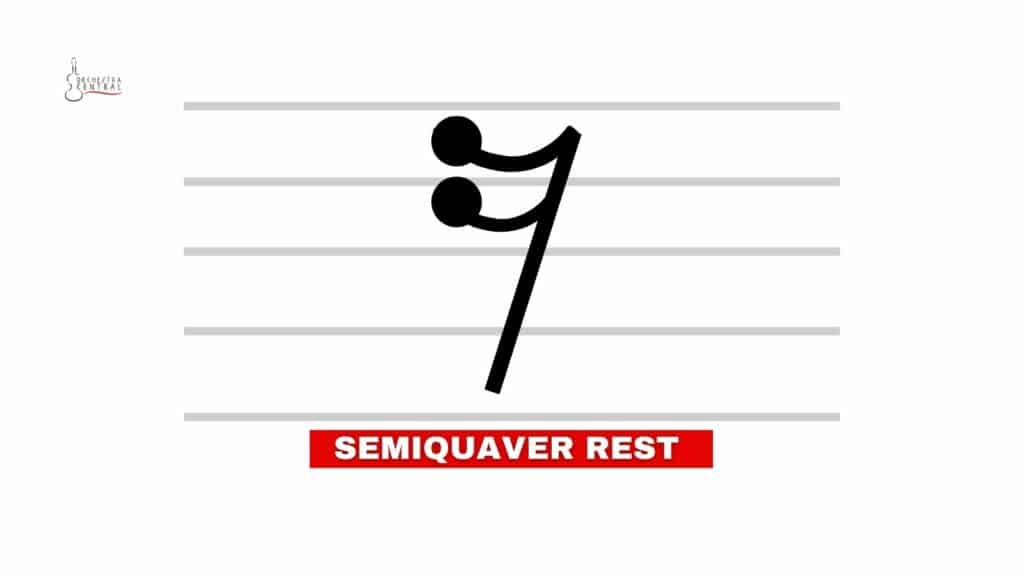
The sixteenth rest has a stem and two flags, each with a dot on its upper left corners. It has a length of a quarter of a beat in a 4/4-time signature. It shows a pause that lasts for a sixteenth of a measure.
Duration of Notes and Rests
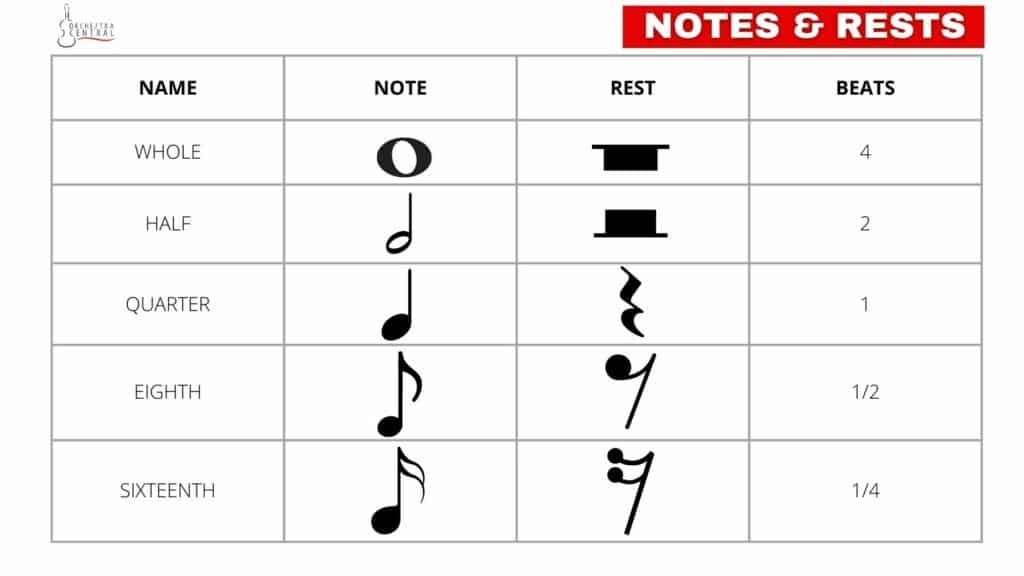
The duration of the different kinds of notes and rests determines the tempo and rhythm of a piece of music. It is measured in beats and determined by the shape, size, and position of the staff.
The duration of the various kinds of notes and rests exist in a 4/4-time signature and are similar. For example, a whole note has a duration of four beats, while a whole rest has a duration of four beats.
Expert Tip: Dots, ties, and borrowed division get lengths other than the standard ones. For example, a dotted quarter rest lasts for one and a half beats. Dotting adds half the value of the notes and the rests. Ties work similarly to the dots sometimes. For example, dotted notes and rests last as long as a quarter and an eighth, connected with a curved line.
Table of Contents






